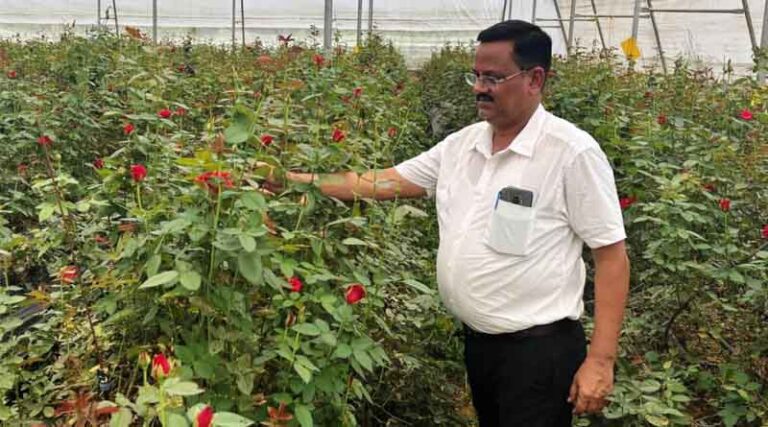
From Paddy to Petals: Chhattisgarh Farmer Earns ₹1 Million Annually by Cultivating Roses
24 July 2025, Surajpur: What began as a humble journey in traditional paddy cultivation has blossomed into a thriving floriculture enterprise for Dinesh Kumar Singh, a progressive farmer from Surguja district in Chhattisgarh, India. Once dependent on unpredictable monsoons and low returns from rice farming, Singh now cultivates premium Dutch roses using polyhouse technology—earning an impressive ₹10 lakh (approximately $12,000 USD) annually.
Shifting from Rice to Roses
For years, Singh practiced conventional paddy farming, which required intensive labor, high input costs, and delivered minimal profit. Seasonal risks made matters worse, leaving his livelihood vulnerable to climate fluctuations. It was during this time that he was introduced to the concept of floriculture through the state horticulture department. Inspired by the possibilities, he decided to transition into flower farming and invested in a polyhouse.
Building the Polyhouse: Public-Private Support
Singh’s venture took off with robust support from both financial and technical institutions. He received ₹63 lakh in funding from NABARD (National Bank for Agriculture and Rural Development) and technical guidance from the horticulture department. With a total investment of around ₹1.3 crore, including a ₹93 lakh bank loan, he established a modern polyhouse spanning two acres. Inside, Singh cultivates high-demand varieties like Dutch Rose, Jumelia, and Top Secret.
Year-Round Cultivation Through Modern Technology
The polyhouse enables year-round cultivation, regardless of external weather conditions. Advanced infrastructure includes a drip irrigation system, foggers to regulate temperature and humidity, and a trained workforce to manage plant care through techniques like “winding” for improved bud development. Selective pruning is also practiced, which enhances flower quality and boosts productivity.
Strong Market Demand and Profits
According to Singh, market demand for roses remains high throughout the year. On regular days, a single rose fetches ₹4–₹5, while during peak seasons like weddings and festivals, prices soar to ₹15–₹20 per flower. His roses are not only in demand across Chhattisgarh but also see steady orders from states like Odisha and Uttar Pradesh.
Government Schemes Fuel Growth
Singh attributes much of his success to government programs like the National Horticulture Mission. These schemes provided subsidies for infrastructure such as the polyhouse, drip systems, and foggers. Regular support and training from the horticulture department helped him adopt modern practices and transition from farming to agribusiness.
Economic and Emotional Fulfillment
Singh highlights the mental satisfaction that comes with rose cultivation. Unlike paddy, which involves unpredictable market pricing and high water usage, rose farming is more resource-efficient and financially rewarding. Within just one year, he achieved a net profit of nearly ₹10 lakh—demonstrating that horticulture can be both a sustainable and profitable choice.
An Inspiration for Others
Today, Dinesh Kumar Singh’s journey stands as a powerful example for farmers across India and beyond. His transition from traditional farming to high-tech floriculture showcases how innovation, government support, and strategic risk-taking can redefine rural entrepreneurship. He continues to inspire others in the Surguja district and beyond to explore alternatives that bring both prosperity and pride to farming.
Also Read: Verdesian Life Sciences Appoints RK Goyal as Head of Asia Commercial Operations
📢 If You’re in Agriculture, Make Sure the Right People Hear Your Story.
From product launches to strategic announcements, Global Agriculture offers unmatched visibility across international agri-business markets. Connect with us at pr@global-agriculture.com to explore editorial and advertising opportunities that reach the right audience, worldwide.






